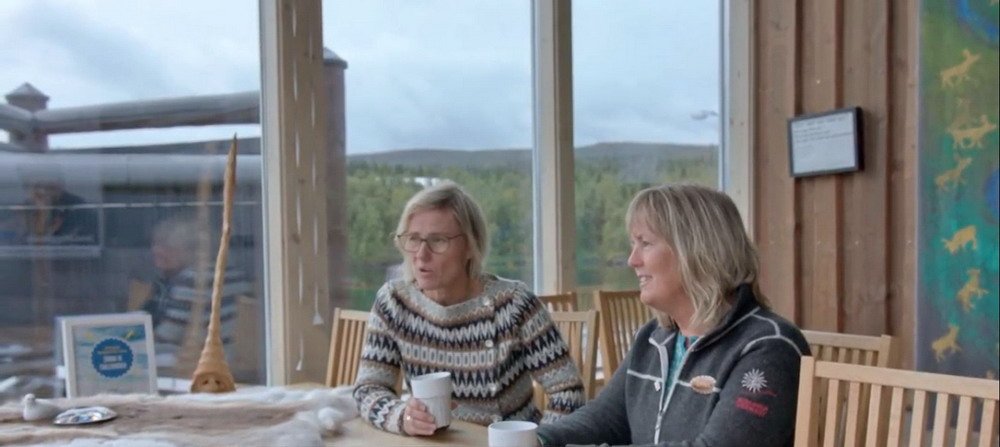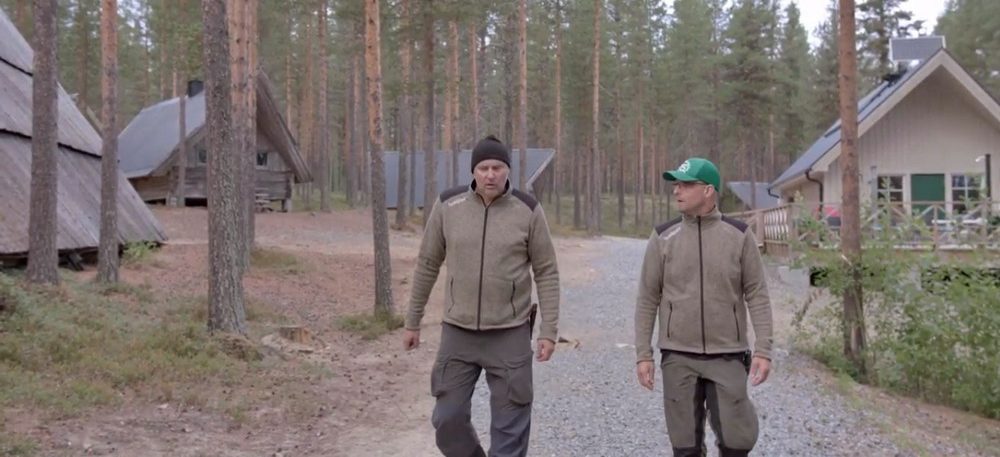GSTC Member “Region Västerbotten” in Northern Sweden, has identified GSTC and its Criteria as a means to help create sustainable tourism in businesses and DMOs. Region Västerbotten is responsible for regional development and growth in Västerbotten County.
This is the story of they have applied the GSTC Criteria in their region:
Step 1: Regional Commitment
The Region of Västerbotten was a political organization owned by 15 municipalities and the regional health services. 2014 the regional parliament voted for a long-term development strategy. The program included life quality for citizens, supporting the business sector and sustainable development. Region Västerbotten was reorganized 2019.
Step 2: Adopting Tourism Strategy
The tourism department surveyed methods and programs available to fulfill the long-term strategy. Dan Jonasson (former CEO of the Swedish Ecotourism Society/Nature’s Best Standard) was hired. He had worked with service providers along with destinations. It was decided to use the GSTC Criteria and methodology practiced by the Swedish Ecotourism Society/Nature’s Best and the Norwegian GSTC based destination methodology.
Step 3: Planning and Executing
The tourism department started by:
- Translating the GSTC Criteria for destinations and businesses into Swedish.
- Having meetings to raise sustainable tourism awareness and knowledge among a wide variety of stakeholders: public and private sectors, politicians and NGO’s.
- DMO’s and municipalities were encouraged to sign up to a GSTC-based destination investigation and Gap-analysis (how well the destination match GSTC Destination Criteria and areas of improvement).
- Tourism businesses and other service providers like museums were encouraged to an onsite sustainability inspection leading to a report indicating their sustainability strength, weaknesses and suggested actions. Investigations used GSTC Industry Criteria for businesses and methodology from Nature’s Best.
Step 4: Results
Region Västerbotten has completed the three-year project of introducing sustainable thinking and acting among industry and public stakeholders with the GSTC Criteria as guidelines.
About 60 tourism businesses were assessed with GSTC Industry Criteria and given sustainable tourism action plans (carried out by Dan Jonasson and trainees). Participants ranged from small family outdoors businesses to city hotels, museums and travel agents. Environments included coast, cities, villages, forests, mountains and different seasons. The criteria were easy to use for all businesses. Service providers were often quite good at sustainability. Many times, they were not aware they were within the framework of sustainable tourism. For instance, the benefit to local society was just the natural way to run a business. The film about local sustainability heroes (see below) highlights different aspects of sustainability among the tourism businesses in Västerbotten.
How we worked: We started each meeting at the business in question by encouraging them to let us know what their main problems or important strategic decisions were. Then we investigated strategic sustainability approach, benefits to local society, environmental care, commitment to nature and culture conservation, security, quality of services, equality issues, permits, customer satisfaction, helping disabled, information and marketing. Businesses were given a report with strength, weaknesses and suggested actions to improve. Businesses were also given suggestions on how to solve the problems they faced as a company.
Five local destinations and 8 municipalities were assessed with GSTC Destination Criteria and given action plans. National laws, county authorities and most importantly municipalities are decisive in fulfilling destination criteria. Destination management organizations didn’t have a sustainability agenda or staff to handle the implementation of sustainability. Therefore much of the project work was to divide sustainability responsibilities among stakeholders from the public and private sector and to suggest what role local destination management organizations could have. A lot of time and work spent was with municipality representatives on issues such as culture, nature conservation, climate change policies, equal rights, security, funding, and infrastructure. 8 municipalities were investigated.
Each destination now has a report that includes information about GSTC, destination profile, methodology, rating on fulfilling criteria, sustainability questionnaire to tourism companies in the destination, strength, weaknesses and an action plan with priorities to conform better to GSTC criteria. Destination management organizations now know their role to implement more sustainability in coordination with the authorities and industry.
If businesses and destinations want to be certified as sustainable in tourism it is very likely many will succeed. Costs for certification is holding back most involved. Västerbotten is a region dominated by small service providers with small profit margins. This includes destination management organizations.
Step 5: Next step – Västerbotten Experience
The Region Västerbotten tourism department has employed individuals with good knowledge of sustainability and has made sustainable tourism development its main goal. The role to be a knowledge base for the industry is combined with quality assessment of businesses. The project Västerbotten Experience is a new project building on the one presented here and focusing on clustering businesses and building sustainable micro destinations.
Project work has been assessed by EU-approved consultant European Minds.
Conclusions
Criteria and indicators are good as guidelines but it is essential that assessors are trained to use them wisely in practice. Reaching sustainability is a process that balances what is economically doable during a certain time frame and what is the responsible and the right thing to invest in.
EU-funded projects in Sweden need to address bureaucracy. In this case, more and better sustainability is affected negatively by an ineffective project control system. A three-year project might lose up to a year due to project rules. This bureaucracy is also a problem when organizations want to attract the right experts.
The backing of a strong regional government, like Region Västerbotten, is functional in reaching the goal of more sustainability. Proper funding is made available if you can deliver. Your work will be backed on a political and public level and integrated into society. The sustainability commitment from the Swedish Government to the regional level makes the GSTC Criteria easy to apply in cooperation with the municipalities. Transparency and democratic rules also make actions more open to public scrutiny.
A certification program according to the GSTC Criteria for the industry should be launched by Scandinavia. Fragmentation of sustainability efforts is now hindering effective sustainability results.
Sustainability Heroes in Västerbotten
Full film Vimeo: https://vimeo.com/313387711
Full film YouTube: https://youtu.be/izhZDLKhTWo
Intro – https://www.youtube.com/watch?v=aNt_JySMIlg
Nature Conservation – Swenature: nature-based adventure
Local Benefits – Malå Hotell: hotel in a small ski resort
Cultural Heritage – Stora Hotellet: hotel in central Umeå (acclaimed designer hotel)
Organic Healthy Food – Kulturbageriet: an organic approved bakery in Umeå
Organic Healthy Food – Gotthards: organic approved restaurant in Umeå
Nature Protection, Safety, and Fun – Forsknäckarna: white water rafting on a protected river
Human Rights and Local Participation – Visit Hemavan Tärnaby: DMO in a mountain ski resort
Indigenous Peoples, the Sámi of Lapland – Trolltrumman: Sámi lecturer Helena in her handicraft shop in Tärnaby







